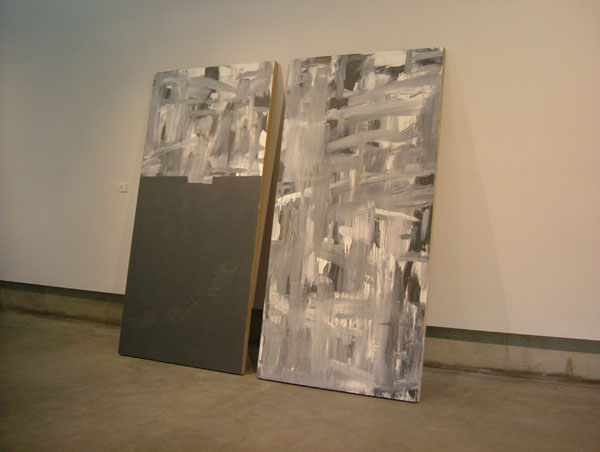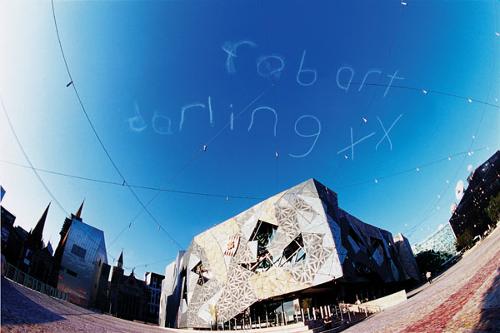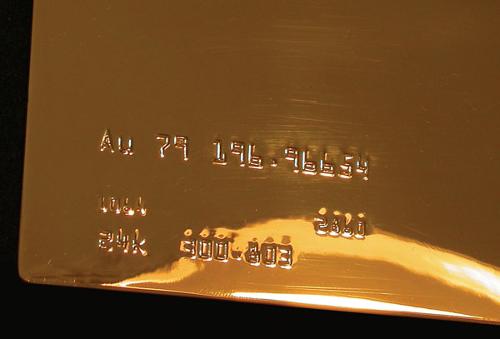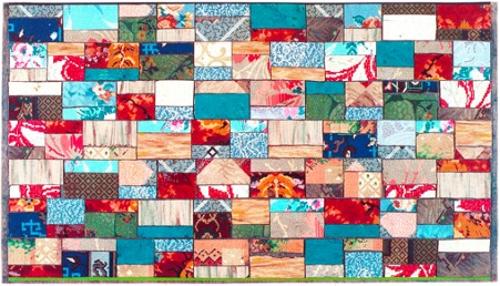
Anton Hart's last major exhibition was the enigmatic collaborative work The Cloakroom (2001) with George Popperwell, a monumental installation at the Experimental Art Foundation that included an eerily prescient video film of a collapsing skyscraper. But from the outset, Hart has always painted, often locating his paintings within an installation format, such as Every fucked painting I've ever made (2000), an unwieldy stack of large canvases bound (and therefore masked) with gaffer tape and vinyl sheeting.
In the nine (mostly painted) works that constituted the solo exhibition thenatureofthings, Hart played with scale, surface, format, materials and the architecture of the space. He stated (in his accompanying notes) that the prevailing greyness of thenatureofthings was the result of an interest in 'the sterility of grey surfaces', as well as a response to 'the tonality of the gallery space'. An uncompromisingly austere palette – of white, grey and black – imposed not only a sense of melancholy, but also a cohesiveness on these diverse works that included the large MDF panels of the diptych Hinterland, the small canvas Document (derived from the image of a farewell note) and a diptych Step by Step, which consisted of two readymade panels from the how-to-paint section in a cheap variety store. The latter, says Hart, 'are like blueprints or plans, where information is pared back to essential guidelines'.
With its abstract language of white brushstrokes punctuated with fragments of black gaffer tape, LMW represented a persuasive portrait, or perhaps a sketch, of Linda Marie Walker. Grey gaffer tape, a material that Hart has employed in many of his projects since the early 1990s, also secured Bundle's clump of small, partially superimposed paintings.
It is instructive to learn that for some years (when travelling) Hart has been assiduously seeking out Frank Stella's Black paintings, yet in his artist's statement he acknowledges that he is 'equally drawn to expressionism and the shadowy, uncontrollable and indistinct'. Clearly, for Hart abstraction may assume many guises and it 'remains the one place where painting can discover something genuine in a media image-saturated world. It is a surprising place. It is a mysterious place... It is evidence of human presence in the world, the marks, the residue of their struggles, intimate and strange'.
Covering an entire wall of the gallery, the many small and differently-sized canvas boards of the ongoing project Local Storms (2002-06) were purchased from a local newsagent, according to the sizes available at the time of purchase. Perversely bound with grey and black gaffer tape that cunningly supplied the variously configured, geometric grounds for Hart's whorls of paint, these panels underscored his enduring preference for commonplace materials. More than that though, the series might be considered a literal embodiment of Hart's concern with the spaces between the polarities of order and chaos. There is symbolism too in the unprecious method of fixing the panels to the wall of the gallery, as a single nail is hammered through the surface of each canvas.
Not apparent in photographic reproductions of Local Storms, in which irregularities appear smoothed over and sanitised, is the crudeness, the wrinkling and makeshift nature of the surfaces of Hart's consciously disordered geometric backgrounds. Courting awkwardness, there is undoubtedly a real vigour (as well as a strength of conviction) that emerges from these works. Finally, Hart's characteristic band-aiding or shrouding (cloaking?) strategy hints at a certain vulnerability, whilst inculcating a sense of mystery: 'The shadowy world,' says Hart, 'is important, is mysterious and that's where poetry lives'.
Along the street façade of the gallery, thenatureofthings was announced by the (Holzer-like) moving text of a newly installed LED sign, designed to provide details of current exhibitions. Mary Knights, Director of the SASA gallery, points to the aptness of such a sign in the neon-lit environment of Adelaide's Hindley Street and anticipates the possibility of its incorporation into future text-based artworks.












